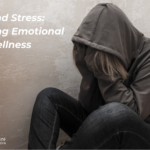When you face a stressful situation, you may feel that this is the end of the world and not know how to change that feeling. Cognitive reframing is a popular technique that psychologists use, and many therapists worldwide, to change the way you think and feel. So what is reframing? And how cognitive reframing has improved mental health and well-being is the question in this post.
Reframing Definition
Cognitive Reframing is a process of changing the way we respond to situations and, instead of feeling stressed or anxious, choose to think differently. The best way I can describe this is by changing how you respond to something that upsets you. The best thing about cognitive reframing is that you can do it anytime, especially when you’re feeling overwhelmed by distorted or negative thinking. Different cognitive distortions cause depression and anxiety. Some of these distortions include the following:
- Mental filters – only thinking about the negatives
- Catastrophizing – always assuming that the worst thing will happen
- All-or-nothing thinking – viewing a situation in absolute terms like ever or never. A person with this kind of thinking may not see the solution to a problem or alternative in a crisis.
- Should statements – feeling like you have failed to meet other people’s expectations in a situation where you “should” do something
- Discounting the positive – disregarding your strengths and successes and instead focusing on what you consider as your failures and weaknesses
- Blaming – the act of attributing different problems to one cause
Cognitive Reframing improved mental health by transforming negative or distorted thoughts and respond differently. For instance, you might learn to focus on your strengths and successes instead of what you perceive as your failures and weaknesses.
Tips for Reframing Thoughts
Cognitive Reframing has improved mental health and can be practised anywhere. And with practice, you can reframe your thoughts and change how you see things. Here are some tips on how to reframe your thoughts.
- Ask questions – Cognitive Reframing will teach you to ask questions to find an alternative solution to the problem. Questions like “why did this happen” or “are there other ways to look at this problem” can help you see things from a different perspective.
- Show compassion – Cognitive Reframing can help your friends and family as well. You can help yourself and others stay mentally and emotionally strong by showing compassion and empathy. For example, if your friend is struggling with a particular problem, ask yourself what you’re going to say to that person to make them feel better. This can help change the way your perspective as well.
- Validate emotions – Acknowledge your thoughts and feelings. If you are trying to reframe a situation, validate your feelings by accepting that you are nervous or feel the way you do. Tell yourself that the worst-case scenarios you often imagine are not even valid. Your goal is to cultivate healthy self-talk. You will eventually learn to recognize that there are various ways to see the same situation.
Conclusion – Cognitive reframing has improved mental health
Negative thoughts can contribute to anxiety and depression as well as cause psychological and emotional distress. Cognitive Reframing has improved mental health and well-being and can help turn negative thoughts into positive ones. Whether it’s done with the help of a professional or practised independently, this technique can offer opportunities for growth and positive change.
Everyone can change the way they think and feel. And Reframing is a great technique that can help. If you use this in your daily life with what you consider as a problem you will not even notice as it will become a habit.
If you want to read more about how to build your emotional resilience or cope with stress Get in touch here.










